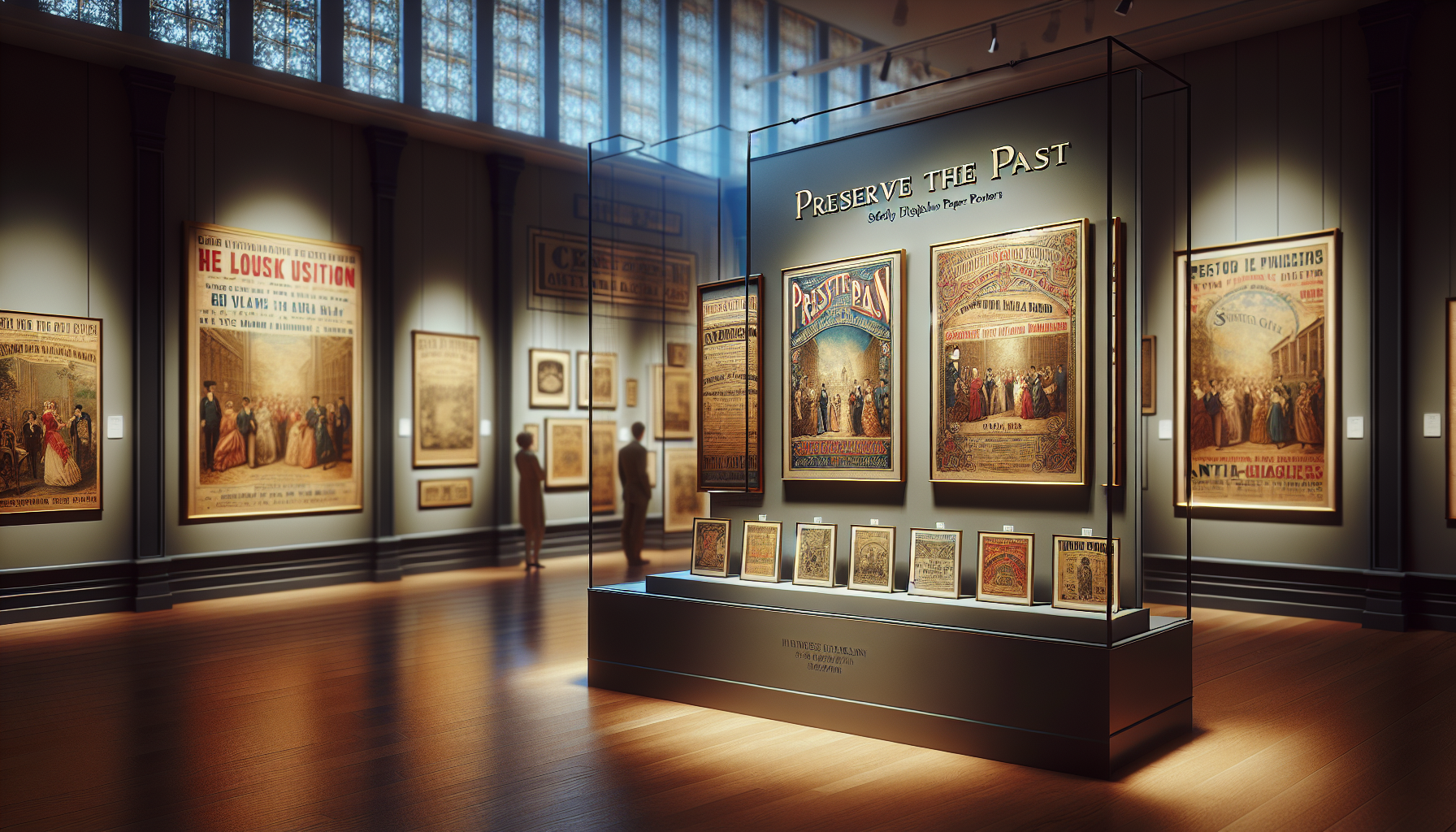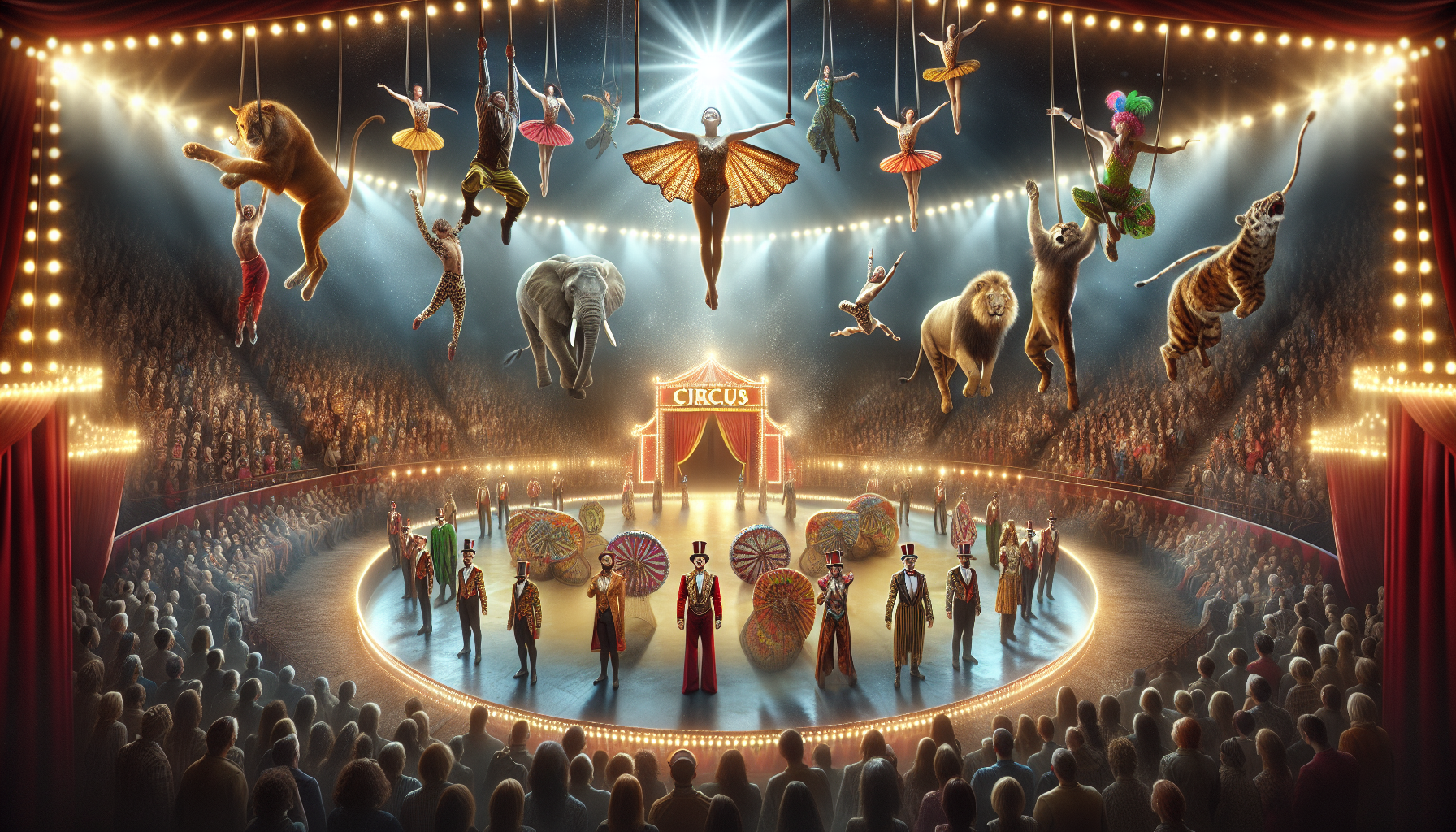In a world increasingly dominated by digital experiences, the tactile beauty and nostalgic allure of vintage paper posters hold a timeless charm. These relics of the past, with their vibrant colors and intricate designs, transport us to bygone eras, evoking memories and emotions that connect generations. Whether it’s an iconic movie poster from Hollywood’s golden age, a World War II propaganda piece, or a psychedelic concert poster from the 1960s, each piece of vintage art tells a story not only of the time it was created but also of the cultural and historical moments it represents. However, the delicate nature of these paper treasures poses significant challenges when it comes to their preservation and display. Ensuring that they remain intact and enjoyable for years to come requires careful consideration and expertise. 🌟
This blog delves into the world of preserving and displaying vintage paper posters, offering insights and practical tips for both seasoned collectors and enthusiasts just beginning their journey. As we explore this fascinating topic, we will uncover the rich history behind some of the most beloved posters, providing context that enhances our appreciation for their artistry and significance. From understanding the materials and printing techniques used in their creation to recognizing the unique characteristics that make each poster a valuable piece of history, our journey will be as informative as it is engaging.
One of the primary concerns in preserving vintage posters is preventing deterioration caused by environmental factors. Light exposure, humidity, and temperature fluctuations can all contribute to the fading and weakening of paper fibers, leading to irreparable damage. Throughout this article, we will discuss best practices for protecting these delicate artifacts, including the importance of using UV-filtering glass and acid-free materials when framing and storing them. Additionally, we will explore innovative display solutions that allow these posters to be showcased safely while maintaining their visual impact and accessibility.
Furthermore, we will highlight the role of restoration in prolonging the life of vintage posters. While some collectors may prefer to maintain the original condition of their pieces, others opt for restoration techniques that can address issues such as tears, stains, and discoloration. We will examine the ethical considerations surrounding restoration and provide guidance on how to find reputable professionals who can perform these delicate procedures with care and precision. 🖼️
Finally, we will emphasize the cultural and personal significance of collecting and displaying vintage paper posters. Beyond their aesthetic appeal, these pieces serve as tangible connections to our past, reflecting societal changes and influencing contemporary design trends. By preserving and sharing these visual narratives, we ensure that future generations can continue to learn from and be inspired by the stories they tell. Whether displayed in a home, gallery, or public space, vintage posters have the power to captivate and educate, making them valuable assets to any collection. Join us on this journey to honor the past and discover how to bring these cherished artworks into the present for all to enjoy. 🎨
The Timeless Appeal of Vintage Posters
Vintage posters have long captivated audiences with their bold graphics and nostalgic allure. These pieces of art, often created for advertising purposes in the past, now serve as windows into different eras, offering a glimpse of the cultural and aesthetic sensibilities of times gone by. For collectors and art enthusiasts alike, preserving and displaying these posters is both a passion and a challenge. The rich history and vibrant imagery of vintage posters make them not only valuable artifacts but also conversation starters in any space they adorn.
The appeal of vintage posters lies in their ability to convey stories through art. Each poster tells a unique tale—whether it’s an advertisement for a 1920s jazz concert, a travel destination from the 1950s, or a classic film from the golden age of cinema. This storytelling aspect, combined with the distinctive design elements of each period, makes vintage posters highly sought after by collectors and art lovers.
Moreover, the value of vintage posters has seen a significant increase over the years. This appreciation can be attributed to several factors, including their rarity, condition, and historical significance. As a result, preserving these treasures for future generations has become a priority for many collectors. However, the process of displaying vintage posters without compromising their integrity requires careful consideration and expertise.
The Art of Conservation: Protecting Vintage Posters
Conservation is a critical aspect of preserving vintage posters, ensuring that these artworks can be enjoyed for years to come. The primary goal of conservation is to stabilize the poster’s condition while retaining as much of the original material as possible. This process involves various techniques and materials designed to protect the poster from environmental factors that could lead to deterioration.
One of the main threats to vintage posters is exposure to light, particularly ultraviolet (UV) rays. Over time, UV exposure can cause colors to fade and paper to become brittle. To combat this, collectors often use UV-filtering glass or acrylic when framing posters. Additionally, displaying posters in areas with minimal natural light can help prevent fading and degradation.
Humidity and temperature fluctuations also pose significant risks to vintage posters. High humidity levels can lead to mold growth, while fluctuations in temperature can cause the paper to expand and contract, leading to warping or tears. Maintaining a stable environment with controlled humidity and temperature is crucial for the preservation of these delicate artworks.
Displaying Vintage Posters: Balancing Beauty and Preservation
Once a vintage poster has been conserved, the next step is to display it in a way that showcases its beauty while preserving its condition. The choice of framing and display location plays a vital role in this process. Framing not only protects the poster but also enhances its visual appeal, turning it into a centerpiece of any room.
When selecting a frame, it’s important to consider both aesthetics and preservation. A frame should complement the poster’s design without overshadowing it. Additionally, using archival-quality materials such as acid-free mats and UV-filtering glass or acrylic can help protect the poster from environmental damage. Archival materials are designed to prevent acid transfer, which can cause discoloration and deterioration over time.
It’s also essential to choose a display location that minimizes exposure to harmful elements. Avoiding direct sunlight and areas with high humidity or temperature fluctuations can significantly extend the lifespan of a vintage poster. Consider placing posters in rooms with controlled lighting and climate conditions, or using protective display cases for added security.
Understanding the Market: Collecting Vintage Posters
The market for vintage posters is both vibrant and dynamic, attracting collectors from all walks of life. Understanding the nuances of this market can be beneficial for both new and seasoned collectors. Factors such as rarity, condition, artist, and provenance all influence a poster’s value, making it essential for collectors to conduct thorough research before making a purchase.
Rarity is a significant factor in determining a poster’s value. Limited edition prints or posters from popular events or films tend to be more sought after, often fetching higher prices. Similarly, the condition of the poster plays a crucial role in its valuation. Posters in pristine condition, with minimal signs of aging or damage, are typically more valuable than those that have undergone significant restoration.
For collectors looking to expand their knowledge and collection, attending auctions, visiting galleries, and joining collector communities can be invaluable. Engaging with other collectors and experts in the field can provide insights into the latest trends and emerging artists, as well as opportunities to acquire rare pieces.
Safeguarding the Legacy: Ethical Considerations in Poster Collecting
As interest in vintage posters continues to grow, ethical considerations have become increasingly important for collectors. Ensuring that the acquisition and trade of vintage posters are conducted responsibly helps preserve the cultural and historical significance of these artworks. This involves verifying the provenance of a poster and ensuring that it has not been acquired through illegal or unethical means.
Provenance refers to the documented history of an artwork’s ownership, which can provide valuable insights into its authenticity and legality. Collectors are encouraged to request provenance records when purchasing vintage posters, particularly for high-value or rare pieces. Ensuring that a poster has been legally acquired and is free from any claims of ownership is crucial for maintaining its integrity and value.
Additionally, collectors should be mindful of the impact of restoration work on a poster’s value and authenticity. While some restoration is necessary to preserve a poster’s condition, excessive or poorly executed restoration can detract from its original character and reduce its value. Consulting with conservation experts and using reputable restoration services can help maintain the authenticity of a vintage poster.
Resources for Collectors: Building a Knowledge Base
For collectors looking to deepen their understanding of vintage posters and enhance their collections, numerous resources are available. Books, online databases, and collector forums offer valuable information on the history, artists, and market trends of vintage posters. Additionally, attending exhibitions and workshops can provide hands-on experience and opportunities to network with other enthusiasts.
Some recommended resources include:
- “Preserving Vintage Posters: Tips and Techniques” on the Art Conservation Channel
- Books such as “The Art of the Poster: A Century of Design” by Marcello Minale
- Online databases like the International Vintage Poster Dealers Association (IVPDA)
- Forums and communities such as the Vintage Poster Forum on Reddit
Conclusion
Preserving vintage paper posters is not merely a matter of safeguarding physical artifacts; it is about cherishing the cultural narratives they convey and ensuring their longevity for future generations to appreciate. Throughout this article, we have explored the intricate processes and considerations involved in safely displaying these delicate pieces of history. By delving into the importance of material selection, environmental controls, and proper framing techniques, we’ve highlighted the meticulous care required to maintain the integrity of vintage posters.
Firstly, we emphasized the significance of understanding the material composition of these posters. Recognizing whether a poster is made from wood pulp, cotton rag, or another material is crucial, as each type requires different conservation techniques. This knowledge allows collectors and conservators to apply the appropriate treatments and storage solutions, ultimately extending the life of the posters.
Environmental control is another pivotal aspect we covered. Light, temperature, and humidity can all have detrimental effects on paper over time. We discussed strategies for minimizing exposure to harmful UV rays, maintaining stable temperatures, and controlling humidity levels. Implementing these practices not only preserves the aesthetic appeal of the posters but also prevents irreversible damage.
The article also highlighted the role of proper framing and display techniques. Using acid-free materials, UV-protective glass, and conservation-grade matting can significantly enhance the longevity of vintage posters. These measures ensure that the posters are not only visually accessible but also securely protected from potential environmental hazards.
Moreover, the piece underscored the importance of regular maintenance and monitoring. Periodic inspections and cleanings are necessary to catch any signs of deterioration early on. This proactive approach allows for timely interventions, ensuring that the posters remain in optimal condition.
The preservation of vintage posters is not just a task for museums or professional conservators. It is a responsibility that can be embraced by anyone who appreciates the cultural and historical significance of these items. By implementing the practices discussed, individuals can contribute to the safeguarding of these artifacts, allowing them to be enjoyed by a broader audience.
In reinforcing the importance of this topic, it is essential to recognize that each poster tells a story, offering insights into different eras, cultures, and artistic movements. Preserving them is akin to preserving pieces of our collective history. As such, it is imperative that we take conscious steps to protect these fragile documents.
We encourage you, the reader, to consider the role you might play in this preservation effort. Whether you are a collector, a historian, or simply someone with an appreciation for art and history, there are practical steps you can take to ensure that these pieces are preserved for posterity. Share the knowledge you’ve gained, apply the techniques discussed, and perhaps even start your own collection with an eye toward conservation.
As we conclude, we invite you to share your thoughts and experiences in the comments section. Your insights and perspectives can foster a vibrant community of like-minded individuals dedicated to the preservation of vintage paper posters. Additionally, consider sharing this article with others who might benefit from its content, thus expanding the network of awareness and action.
In a world that often rushes forward, taking the time to preserve the past is an act of reverence and respect. Let us commit to the diligent care of these vintage treasures so that they may continue to inspire and educate for generations to come. 🌟
For further reading on preservation techniques and the cultural significance of vintage posters, consider visiting The American Institute for Conservation and The Library of Congress. These resources offer a wealth of information for anyone interested in delving deeper into the art and science of preservation.

Toni Santos is a visual storyteller and archival artisan whose creative journey is steeped in the bold colors, dramatic typography, and mythic imagery of old circus posters. Through his artistic lens, Toni breathes new life into these once-lurid canvases of wonder, transforming them into tributes to a golden era of spectacle, showmanship, and cultural fantasy.
Fascinated by the visual language of vintage circuses — from roaring lions to gravity-defying acrobats, from hand-painted banners to gothic typefaces — Toni explores how these posters once captured the imagination of entire towns with nothing more than ink, illusion, and a promise of awe. Each composition he creates or studies is a dialogue with history, nostalgia, and the raw aesthetics of entertainment on the move.
With a background in handcrafted design and visual heritage, Toni blends artistic sensitivity with historical insight. His work traces the forgotten typographies, chromatic choices, and symbolic flair that defined circus marketing in the 19th and early 20th centuries — a time when posters were not just advertisements, but portable portals to dreamworlds.
As the creative force behind Vizovex, Toni curates collections, illustrations, and thoughtful narratives that reconnect modern audiences with the magic of old circus art — not just as ephemera, but as cultural memory etched in paper and pigment.
His work is a tribute to:
The flamboyant storytelling of early circus posters
The lost art of hand-lettered show promotion
The timeless charm of visual fantasy in public space
Whether you’re a vintage print enthusiast, a circus history lover, or a designer inspired by antique aesthetics, Toni invites you into a world where tigers leap through fire, strongmen pose in perfect symmetry, and every corner of the poster whispers: Step right up.





